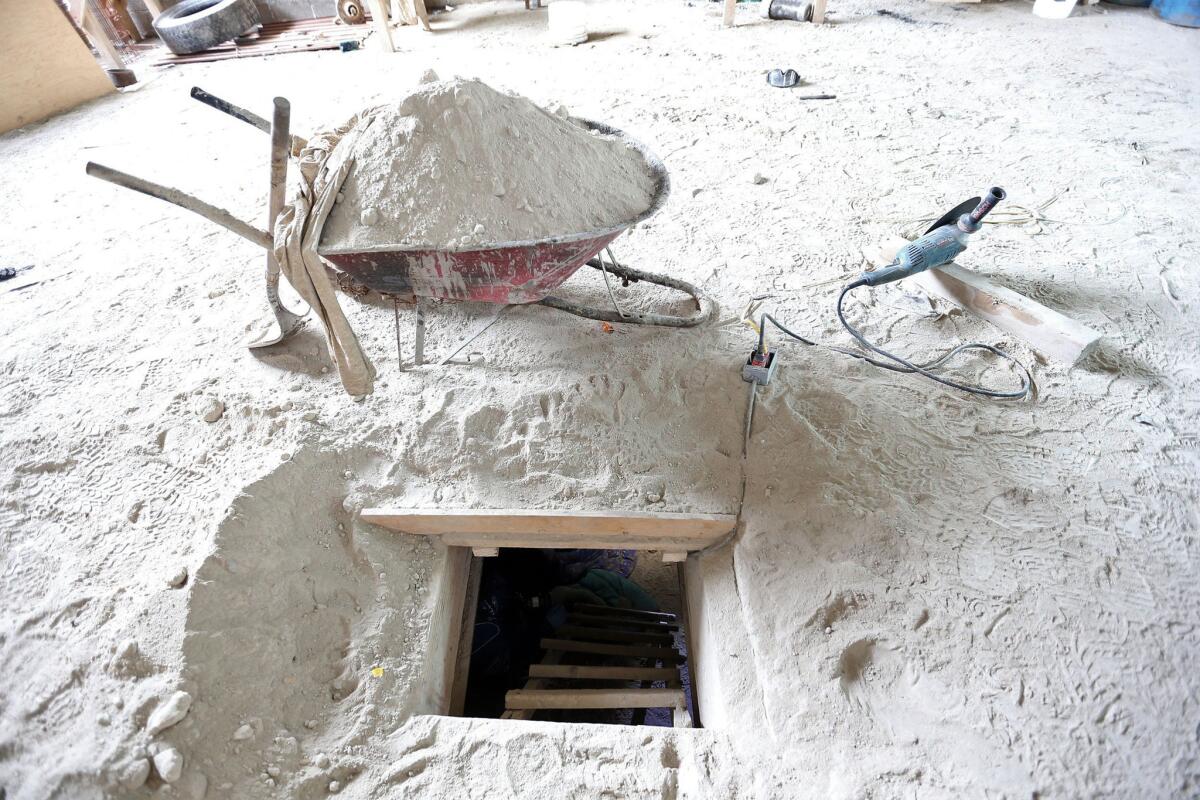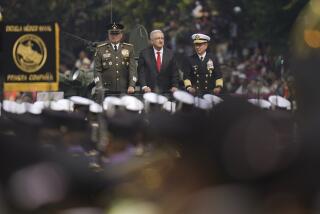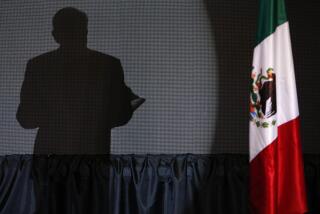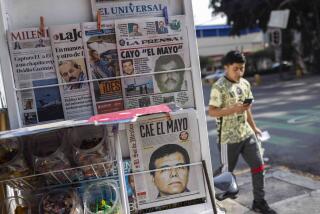It probably cost millions to build tunnel believed to be tailor-made for ‘El Chapo’

The elaborate tunnel believed to have played a central part in the daring escape of Mexican drug lord Joaquin “El Chapo” Guzman from a Mexican prison probably cost the kingpin millions of dollars and took as long as a year to construct, a former federal official says.
“I would say that the construction of that tunnel started days after Chapo Guzman was sent there,” Michael S. Vigil, former chief of international operations for the Drug Enforcement Agency, told The Times on Monday.
Vigil, who has been briefed on the investigation, says construction on the tunnel may have begun as early as a year ago, soon after Guzman was sent to Altiplano, a maximum-security prison about 50 miles west of Mexico City.
The secret passage was nearly a mile long and was about 5 feet, 6 inches high, just tall enough for Guzman, who is believed to be 5 feet 5 at most, to stand up.
“Guzman has hired some of the best individuals that deal with mining technology, and he provides them with the resources to buy the best equipment,” Vigil said. “They tailor-made the tunnel for him.”
Guzman escaped from a 20-inch-square opening inside his prison shower and descended about 30 feet to make his way to the mile-long tunnel, which led to a house under construction and surrounded by empty fields.
Photos show the tunnel was reinforced by a wooden frame and contained lights and a ventilation system made out of PVC pipes, Vigil said. Workers also used GPS technology to accurately route the entrance to his cell and a motorcycle-adapted rail system to move the large amounts of dirt being excavated, he said.
It would be difficult to build such an elaborate tunnel without someone finding out. More than 30 prison employees have been detained for questioning.
“The tunnel had to cost maybe $5 million. But $5 million to El Chapo would be like $5 to you or I,” Vigil said.
Guzman has become particularly adept at using tunnels and secret passageways to evade authorities – and to run his estimated $1-billion drug cartel.
“Guzman has always utilized tunnels, primarily to funnel tons of drugs into the U.S. consumer market,” Vigil said. His Sinaloa cartel, Mexico’s largest and most lucrative trafficker of heroin, cocaine and marijuana, is believed to control a network of hundreds of miles of tunnels and drainage systems along the U.S.-Mexico border.
Last year, as officials closed in on Guzman, he slipped down a hydraulic-powered escape hatch in the bottom of a bathtub and fled through the vast sewer and drainage system underneath the city of Culiacan. He was on the lam for several more weeks before the Mexican marines captured him in Mazatlan.
“I’m sure that he had already surveyed the drainage system in the event that he had to make an escape,” Vigil said. “Chapo Guzman does not leave anything to chance.”
For more than two decades, federal authorities have been uncovering tunnels that have driven the transnational drug trade near the U.S. border. More than 150 such tunnels have been discovered along the United States’ southwestern border since the early 1990s, according to U.S. officials.
Since 2006, more than 80 sophisticated tunnels have been uncovered, including about 25 near San Diego.
One of the first tunnels was discovered in 1990 and was relatively small but sophisticated: a 270-foot passageway that began under a pool table in a Mexican luxury home and terminated near a border crossing in Douglas, Ariz.
A hidden switch in the home, owned by Mexican businessman Rafael Francisco Camarena, activated a hydraulic system that hoisted the pool table and a concrete slab high into the air, revealing a narrow shaft that extended 30 feet below the ground. The 5-foot-tall tunnel featured concrete reinforcement, side rooms, electrical outlets, lights and a pump to keep it free of water. It was lined with compartments that could store up to 5 tons of cocaine, and a trolley was used to move the drugs along the passage.
At the time, the tunnel was estimated to have cost $1.5 million.
In 2010, two underground passages were found within a block of each other in a San Diego warehouse district, leading authorities to seize a total of 45 tons of marijuana. The second passageway was lined with tongue-and-groove wooden boards that provided a level surface for a cart-and-rail system; its other end was in the kitchen of a Tijuana home.
In 2011, U.S. officials discovered a 600-yard tunnel, with an elevator, wooden flooring and an electric cart-and-rail system, terminating in a produce warehouse just north of the border in San Diego. They seized 32 tons of marijuana, one of the largest drug busts in U.S. history.
On the Mexican side, the tunnel opening was hidden in a building on the edge of the runway at the Tijuana International Airport, and the passageway ran directly under the runway where planes regularly took off.
Jose Sanchez-Villalobos, one of the top members of the Sinaloa cartel, was linked to that tunnel in 2012, in addition to a 2,200-foot tunnel discovered in 2010.
Last year, Glennys Rodriguez, a 73-year-old Chula Vista, Calif., woman, was arrested on suspicion of overseeing the construction of a 600-yard tunnel that ended in an industrial park in San Diego’s Otay Mesa area. It was secured with wooden trusses and equipped with lighting and a crude rail system, as well as a pulley system to help hoist packages from 70 feet below ground.
Later that week, authorities in Mexico discovered a second tunnel just around the corner from the first. It was larger and more sophisticated, with ventilation and a multi-tiered electrical rail system.
And this year, U.S. Border Patrol agents discovered a trafficking tunnel west of the San Ysidro border crossing after a sinkhole gave away its location. The tunnel, which was unfinished, started in Tijuana but never opened onto American soil.
Times staff writers Joseph Serna, Richard Marosi and Tracy Wilkinson contributed to this report.
For more breaking news, follow me @cmaiduc.
ALSO:
The ‘El Chapo’ escape: When real life mimics fiction
Who is ‘El Chapo’ and how did he become a dark legend in Mexico?
Mexico drug lord Guzman’s escape tunnel is a minor engineering masterpiece
More to Read
Sign up for Essential California
The most important California stories and recommendations in your inbox every morning.
You may occasionally receive promotional content from the Los Angeles Times.










